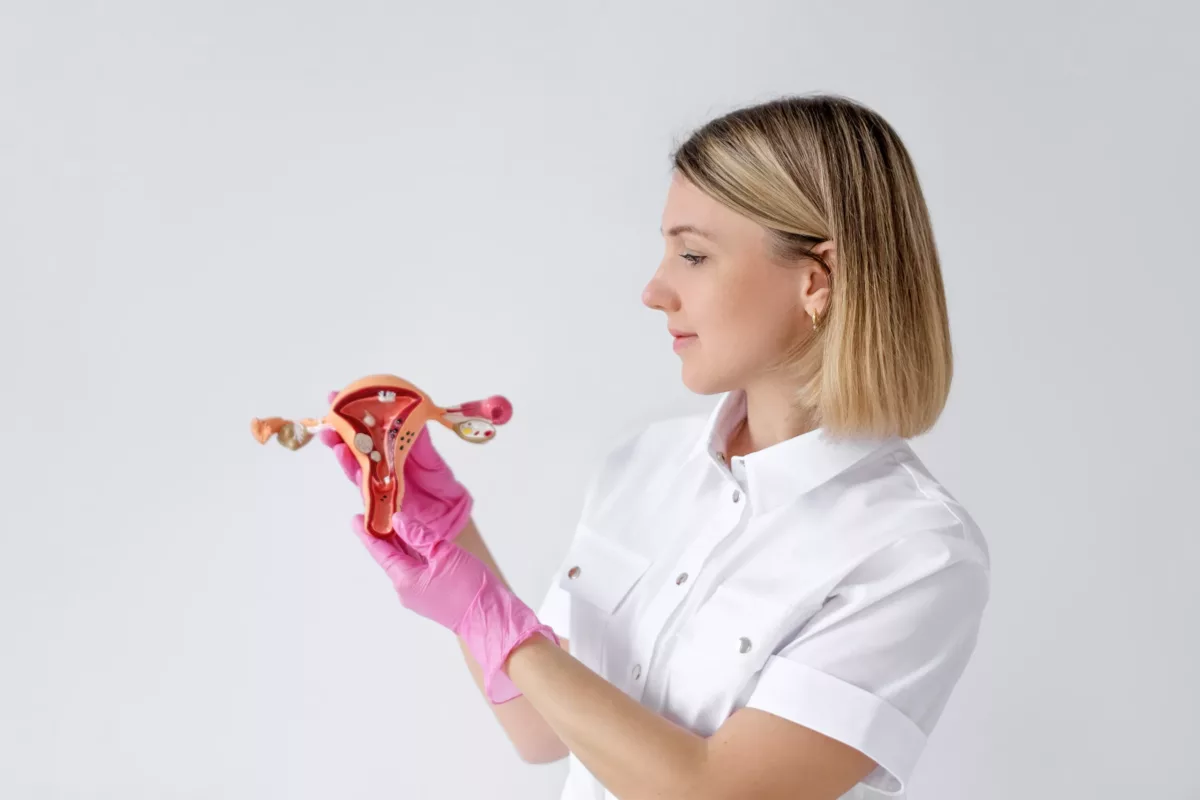A health condition that cause discomfort and pain of the vagina and happens due to increased levels of natural bacteria is called bacterial vaginosis (BV). However, balanced levels of bacteria helps keep the vagina healthy, but when these bacteria grow and multiply abnormally, it may lead to BV.
This condition may occur at any age but is mostly diagnosed during reproductive years. It often happens due to hormonal changes that allow certain bacterial types to grow. Sexually active women are also more likely to develop BV. While it is not clear why, unprotected sexual intercourse and douching increase the risk of developing BV.
Symptoms
Check below for some symptoms often noticed in people with BV:
- Vaginal itching
- A burning feeling while urinating
- Thin vaginal discharge that may be white, green, or gray
- Foul-smelling vaginal odor
However, most people with this condition do not experience any symptoms.
It is recommended to make an appointment to see a doctor in the following cases. Examples include:
- Unusual smell of the vaginal discharge and you experience discomfort
- Think you have vaginal infections
- You have a new sex partner or multiple partners. In some cases, the symptoms of BV are similar to certain sexually transmitted infections (STIs)
- Symptoms persist after a yeast infection
Causes
This condition happens when vagina’s natural bacteria levels grow out of control. The bacteria in the vagina are also known as the vaginal flora. Thus, balanced number of bacteria in the vagina helps keep it healthy. In normal circumstances, “good” bacteria are much more than “bad” bacteria.
Lactobacilli are the name of good bacteria, and anaerobes are bad bacteria. BV occurs when anaerobes outnumber lactobacilli.
Risk Factors
Some factors may increase your risk of developing bacterial vaginosis. Check below for some of them:
- New or multiple sex partners – While experts do not fully understand the connection between having sex and bacterial vaginosis, it tends to occur more frequently in sexually active women. BV is also common when the sex of both partners is women.
- Douching – Normally, the vagina clears itself. That’s why rinsing the vagina with water or anything else usually is not required. Moreover, in some cases, it may cause problems and allow the bacteria to grow out of balance.
- Lack of lactobacilli bacteria – Sometimes, the vagina may not produce enough lactobacilli that significantly increases the risk of developing BV.
What Are The Possible Complications of Bacterial Vaginosis?
Complications of bacterial vaginosis happen quite rarely. Check below for some of them:
- Sexually transmitted infections (STIs) – Women with BV are at higher risk of developing STIs. These include HIV infection, herpes simplex virus, chlamydia, gonorrhea, and others.
- Infections after gynecological surgery – This condition elevates the risk of infections associated with surgery, including hysterectomy or dilation and curettage (D&C).
- Pelvic inflammatory disease (PID) – In some cases, bacterial vaginosis may cause PID. This is an infection of the uterus and fallopian tubes. Women who experience pelvic inflammatory disease are at higher risk of infertility.
- Pregnancy problems – Certain studies showed that BV increases the risk of preterm birth, reduced birth weight, miscarriage, and others.
- Postpartum endometriosis – This is an infection of the uterus lining.
- Urinary system problems (such as painful urination)
How to Prevent Bacterial Vaginosis?
Check below for some tips that may help prevent BV:
- You should not use scented products – It is advised to wash your genitals with warm water only. Avoid scented soaps or other products because they can cause inflammation of the vaginal tissue.
- Do not douche – It is important to know that douching do not clear bacterial vaginosis, moreover it may worsen the condition. Generally, the vagina does not require cleansing.
- Practice safe sex – You should use protection during sexual activity. These include condoms or dental dams. Protective measures help prevent sexually transmitted infections.
Diagnosis
Healthcare professionals often diagnose BV by performing the following tests and procedures. Examples include:
- Questions about your symptoms and medical history – Doctors may ask if you have had STIs.
- A pelvic examination – During this procedure, doctors will take a look at your vagina for irregularities linked with the condition.
- Vaginal discharge testing – This test is used to check for certain cells covered with bacteria.
- Test your vaginal pH – The acidity of the vagina also may indicate BV. For instance, if test results show a vaginal pH of 4.5 or higher it indicates bacterial vaginosis.
Treatment
Commonly, BV is treated with medicines. However, doctors prescribe different medications because it depends on several factors. For example, the severity of the condition, overall health, age, and preferences. Check below for some medicines often prescribed by doctors for women with BV:
- Metronidazole – Doctors usually prescribe topical gel or pills that contain this medicine. Never drink alcohol while using medicines with Metronidazole.
- Clindamycin – It comes as cream that is inserted into the vagina. However, you can use a pill or a suppository. Furthermore, it is not recommended to have sex while using these medicines because suppositories and creams can weaken latex condoms.
- Tinidazole – This is an oral medicine used to treat BV. You should not drink alcohol for at least 3 days after finishing the treatment with Tinidazole. The most common adverse reaction caused by this medicine is stomach upset.
- Secnidazole – It is an antibiotic that is administered one time only. It comes as a packet of granules that are mixed with soft food (including applesauce, pudding, or yogurt). Be careful when eating the mixture because it is not allowed to chew these granules.
However, when the sex partner is male, treatment is not needed, but BV may spread to the sex partners if they are females.
Follow the treatment exactly as recommended by your doctor, even if the symptoms disappear. Otherwise, the condition may return (recurrent bacterial vaginosis).
Frequently Asked Questions
What causes bacterial vaginosis?
This condition occurs due to an imbalance of natural bacteria in the vagina. When lactobacillus levels are reduced, it causes overgrowth of other bacteria. For more details, discuss it with your doctor.
Can men carry BV?
Yes, they can carry the bacteria and cause BV to their female partners during sexual intercourse. However, they cannot contract bacterial vaginosis themselves.
What can be mistaken for BV?
The following conditions can be mistaken for BV. Examples include yeast infections (such as candidiasis), sexually transmitted infections (such as trichomoniasis), urinary tract infections, pelvic floor dysfunction, skin conditions, and others. Ask your healthcare provider if you have additional questions.




